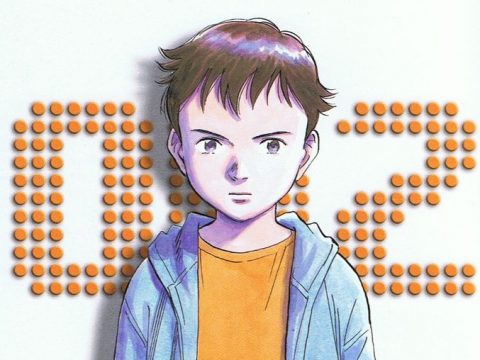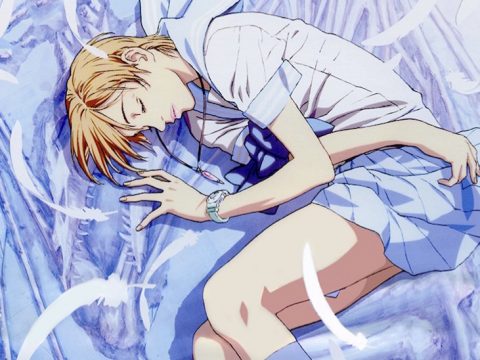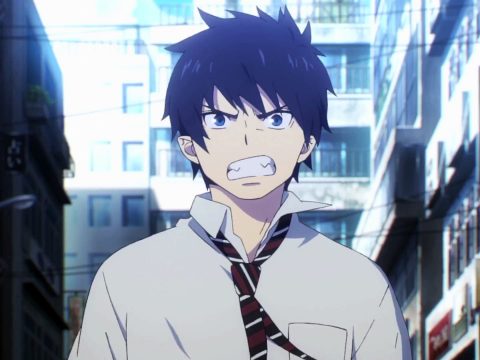
The quickest way to describe the concepts behind the Siren series is that it’s a little like Metal Gear Solid set in a Silent Hill world. That might be overselling it just a bit, and it also misses out on a few things that make Siren totally unique. A freaky, sneaky scavenger hunt from hell is a bit closer to the truth. Siren: Blood Curse (also known as New Translation) is the third installment in the Siren series, beginning with Siren (aka Forbidden Siren) in 2004 and continuing with Siren 2 in 2006. There was also a forgettable live action film released along with the second game that, rather predictably, had almost nothing to do with the Siren mythos. Now we have the Playstation Network only download (unless you want to import the disc) third chapter for the PS3, which actually takes us back to the beginning.
New Translation is the more apt subtitle, as it is, in fact, a sort of echo of the first game (a bit like Silent Hill 1 and 3), taking place in the same village and running through similar events. The cast is, with one exception, totally new, yet fans of the original will immediately see direct connections between games. This time around, an American television crew, shooting for a schlocky sci-fi reality show, ends up in Hanuda village, a strange town in rural Japan that seems to have been stopped in time back in 1976. The crew stumbles upon a bizarre ritual, watching as someone is killed right before their eyes. The proceedings are suddenly interrupted as a young man runs through, saving a second girl from death. That is where the story begins, though as we quickly find out, beginnings and endings in Hanuda are rarely what they seem.
What follows are twelve “episodes•bCrLf divided up into several smaller chapters (each chapter being a separate download), with brief recaps leading into the first playable chapter, then ending with a “in the next episode•bCrLf preview. At times this can really break the gloomy mood, cutting in with little fan-fare. This is most noticeable at the beginning of the game when the episodes are very short. Once things get rolling though, you might welcome the break in tension. Hanuda is full of “shibito•bCrLf (dead people) who cannot be killed, only temporarily knocked out. Without a weapon of some sort it’s actually impossible to knock them down at all. There is no such thing as a health meter in the game, and it only takes two or three hits from a shibito to kill off anyone unfortunate enough to be spotted. While you may be naturally helpless and vulnerable, you turn into an unstoppable killing machine once you obtain just about any weapon, and there are plenty to find. There are fifty different weapons in the game, from the standard knives and gardening tools to acoustic guitars and video cameras. If you get a gun? Well, you may as well be Rambo. Still, it’s easy to be overwhelmed by two or three shibito, so don’t get too cocky.

Sneaking is the key to survival in Hanuda. This is aided by the game’s signature feature, the “sight-jack•bCrLf system. After a few episodes, each character (you eventually gain control of seven different people, including a little girl) is able to jump into the head of any nearby shibito, seeing and hearing everything that shibito does. In Blood Curse they’ve upped the ante a bit, giving you the ability to jack into three shibito at once. From safe cover, you can sit back at watch the undead shuffle around, going about their “lives,•bCrLf occasionally giving you clues as to what to do next. Some will look directly at special items you need to grab or operate, some will turn away from the path, giving you time to quietly sneak past and some will be no help at all, looking point-blank at a wall. You are also able to hear them talk and breathe, and even their breathing can tell you if they are a special target.
Much like the previous games, the real story behind what’s going on in the village is told though the archive system. Scatted throughout the village are various artifacts that, when picked up or looked at, will be added to a large archive grid in the menu. You can then read much more about them at your leisure. Some things are rather bland, while others will offer up huge plot points that you would otherwise miss though the gameplay and cut scenes. In fact, what you get though the gameplay is a rather confusing mish-mash of events. It’s only through the diligent collection of every artifact that you’ll finally get the full story, and they do not make collecting them all an easy feat. I ended up with only twenty-seven out of fifty after my first play-though, and I thought I knew what I was doing. While the first game went much further in holding your hand in order to get them, Blood Curse leaves just about everything up to the player. Do not feel ashamed to grab a FAQ in order to finish off the grid.

The music and sound-effects also play a large part in setting the already otherworldly atmosphere. The music often makes the work of Akira Yamaoka in Silent Hill look like candy coated pop. Nothing in Hanuda is joyful, and the music adds a thick layer of droning despair. Full of guttural dual-tone utterances that would make most Tibetan monks blush and insect-like clicks and squelches, it’s nearly terrifying enough on its own. Then there’s the almost constant rainfall, masking the faint footsteps of the damned. Occasionally there will be a far off laugh or chitter from some twisted resident, talking to themselves in a mad alien tongue (i.e. Japanese). Finally, there is the eponymous siren. While there is an actual siren in the game, there is little explanation for the forlorn wail that run throughout the events in a few of the chapters. Again, it would be wise to take nothing at face value.
A major failing is the camera view. If you’re just puttering around slowly, gradually feeling your way around an environment, then everything is fine. Some of the areas are extremely dark, as in totally black even with a flashlight, but for the most part seeing the area around you is easy. If you are spotted and need to beat cheeks however, all that goes out the window. First off, the camera is far too close to the character, provide a rather narrow field of view and zero peripheral vision. Second (and this is optional) once spotted the screen is split in half, giving you the viewpoint of the attacking shibito (much like sight jacking.) Obviously this gives you even less to see, making it very easy to become totally disoriented, especially in small spaces indoors. Perhaps this is intentional, raising the tension and making you much less likely to just go running around like an idiot. Whatever the case, I found myself dying most often just because I couldn’t see where I was going.

Also, as a big fan of the original, I found the extreme linearity to be a let down. One of the coolest features of the original is the massive (and, let’s face it, pretty damn confusing) time-line grid. In that case, the player was able to choose his route through the few days that the events take place, jumping back and forth day to day, hour to hour and character to character. In Blood Curse, there is no direct time-skipping, no mysterious chunks of missing time and very little overlap in the story lines of each character. While this does serve to reduce the amount of plot confusion, it also removes a very cool layer of exploration and discovery.
Overall, players who are new to the way Siren operates might find it very frustrating at first. The lack of coherent storyline, difficulty of staying alive and awkward viewpoint can make it a very frustrating game very quickly. There is little instant gratification to be found and players will die quite often. Getting most of the plot from items rather than cut-scenes also takes some getting used to. It’s a game that only reveals itself as a whole at the end, a greater sum of its many scattered parts. Yet for horror and weird tale fans, there’s a ton of forbidden fruit to sink your teeth into. Fans of the original should not hesitate to pick up Blood Curse, and anyone wanting a truly original survival horror experience would do well to gather their strength and give it a try.
Publisher: Sony Computer Entertainment
Developer: SCE Studios Japan
System: Playstation 3
Available: Now
Rating: M






![[Review] Ghost in the Shell Deluxe Edition Manga [Review] Ghost in the Shell Deluxe Edition Manga](https://otakuusamagazine.com/wp-content/uploads/2017/08/gitsdeluxeheader-480x360.jpg)
